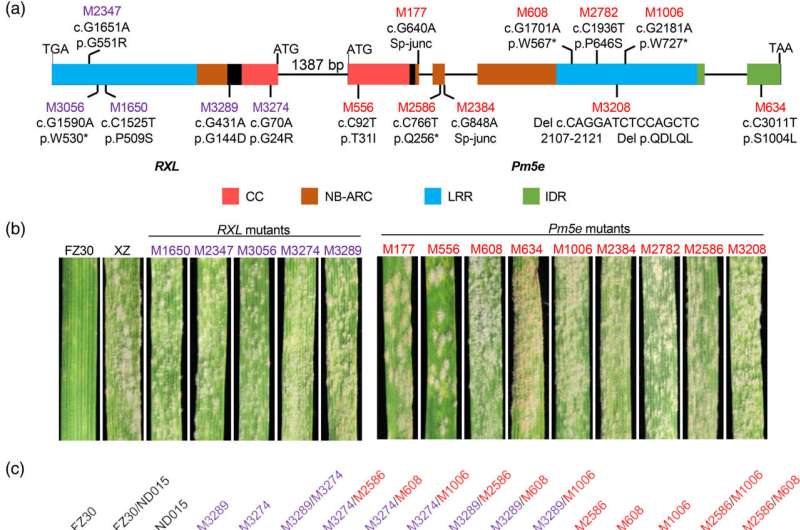By Zhang Nannan

A study has identified a wheat nucleotide-binding and leucine-rich repeat (NLR) gene pair, RXL and Pm5e, that confers resistance to the devastating wheat powdery mildew disease.
The study, led by Prof. Liu Zhiyong from the Institute of Genetics and Developmental Biology (IGDB) of the Chinese Academy of Sciences, in collaboration with international teams, published in Plant Biotechnology Journal, could pave the way for developing more resistant wheat varieties and reduce the reliance on pesticides.
Wheat powdery mildew, caused by Blumeria graminis f. sp. tritici (Bgt), is a widespread disease that leads to yield losses of approximately 10–40%. Developing resistant wheat varieties using powdery mildew resistance genes is a key strategy to reduce pesticide dependence in agriculture.
Most of the cloned powdery mildew resistance genes encode CNL (CC-NLR) proteins. CNLs, such as Arabidopsis ZAR1 and wheat Sr35, can form a wheel-like pentameric complex known as the resistosome, in which the coiled-coil (CC) domain inserts into the plasma membrane and acts as a Ca2+ channel, triggering the influx of Ca2+ to activate immune responses.
In most cases, a single NLR protein can simultaneously recognize effector molecules from pathogens and initiate immune responses. However, some NLRs function as NLR pairs, where the sensor NLR recognizes the pathogen effectors through its integrated domain, and the other NLR in the pair, known as the executor NLR or helper NLR, is responsible for initiating the immune response.
These NLR pairs are often tightly linked in the genome, such as the RGA4/RGA5 and Pik-1/Pik-2 in rice, and the RPS4/RRS1 in Arabidopsis. However, it is unclear whether NLR pairs regulate disease resistance in wheat.
In their study, Liu and his collaborators from the Sainsbury Laboratory (UK), Nanjing Normal University, and Henan University of Science and Technology demonstrated that the RXL and Pm5e genes in wheat function together as an NLR pair to mediate resistance to powdery mildew. Both genes encode atypical NLR proteins, with RXL containing a truncated NB-ARC domain and Pm5e featuring an atypical CC domain.
Further research showed that RXL and Pm5e prefer to form a heteromeric complex, and the CC domain of Pm5e can competitively interact to specifically suppress the hypersensitive response triggered by the CC domain of RXL, revealing the possible regulatory mechanism of this NLR pair. The RXL/Pm5e orthologs evolved from a pre-existing head-to-head pair before the divergence of Triticeae through phylogenetic analyses.
Click here to see more...